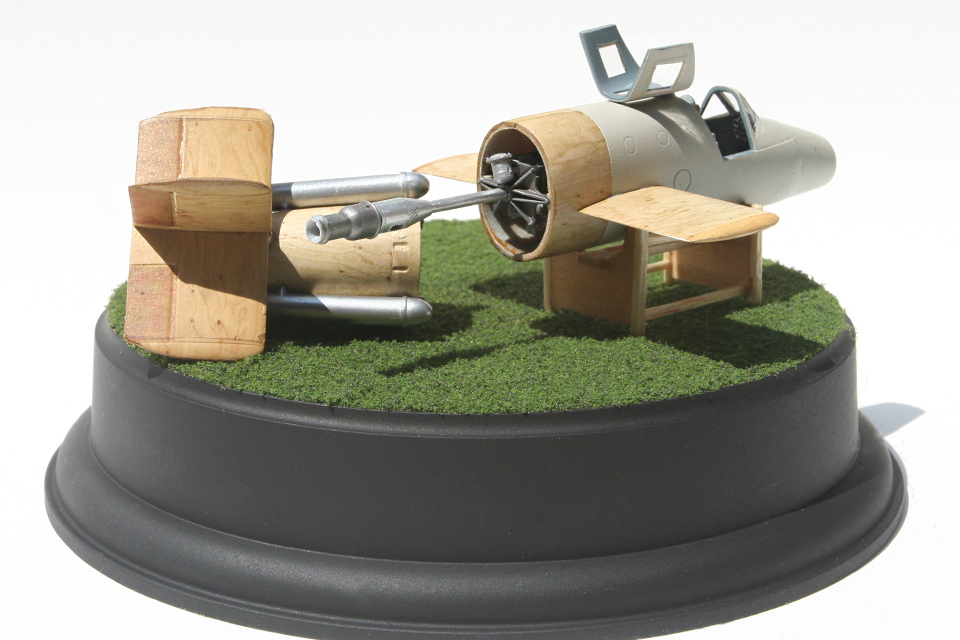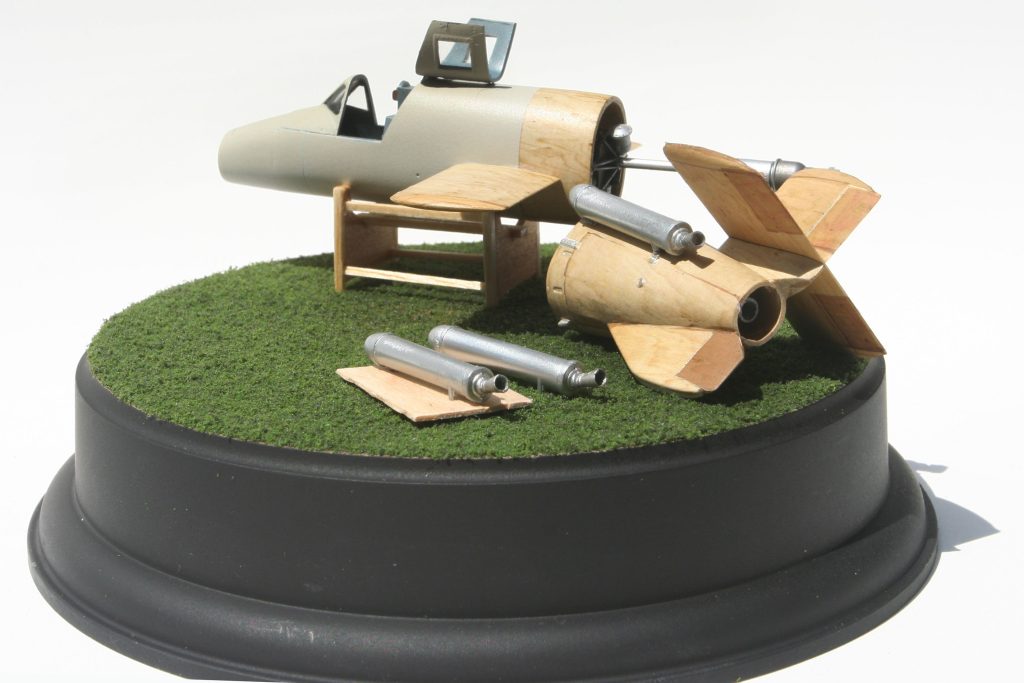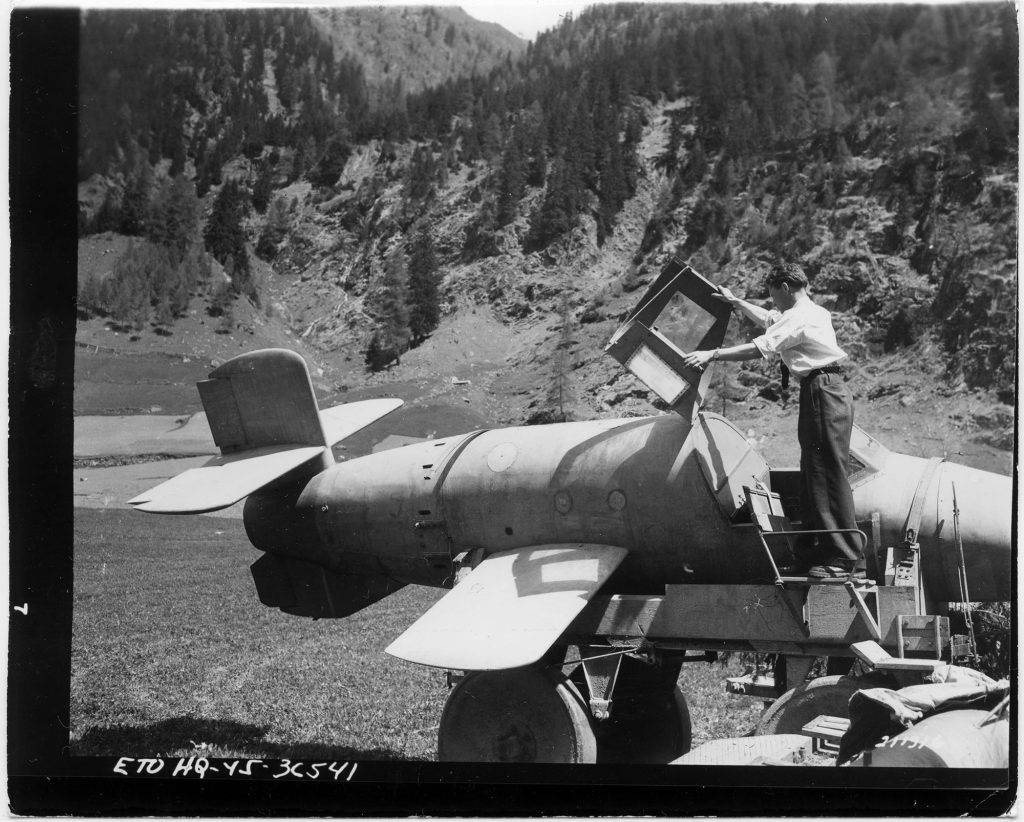By the End of WWII the Luftwaffe entertained nearly any idea to stave off he inevitable

The rocket-powered Bachem Ba-349 Natter was a desperate attempt by the Germans to stem the tide of Allied bombers attacking enemy targets coming in larger and larger numbers during the waning days of World War II. Constructed from plywood and other “non-strategic” materials, it was a curious design that in retrospect probably looked like a better idea on paper.
On March 1, 1945, the only manned launch of the Ba-239 resulted in the death of Bachem-Werke test pilot Lothar Sieber. Most accounts say that the craft left the tower and, climbed to over 1,500 feet when engineers on the ground saw the cockpit canopy fly loose and from the craft. Whether Sieber was injured, knocked unconscious, or struggled to continue the mission, the Natter soared to about 5,000 feet when it rolled over and flew into the ground, killing Sieber.
The Kit
DML/Dragon models from Hong Kong released their 1/48th-scale Ba-349 in the late 1980s. Crisp molding, nice detail, an etched-metal detail set and a complete Walter 109-509A rocket motor make this simple kit a gem. The fuselage is split so that it can be displayed showing off the power plant. This version of the kit comes with a simple maintenance stand, two mechanics and a display base.
Start with the front end of the aircraft. The cockpit is simple and straightforward, much like the real thing, paint it a medium grey with aluminum details and a small black control panel. Add the seat belts that are part of the metal detail set included in the kit. Beware, as some of the parts are very small and delicate. Care should be taken when removing them from the trees, and then be even more careful that they don’t disappear during assembly. The rocket motor is a combination of metal from the etched fret and a number of other delicate pieces. Patience is essential here, but pays off in a nice detailed part of the finished model.
A manned shotgun shell
The rocket’s only armament was a “shotgun” load of as many as 55 explosive rockets that would be fired into the packed formations of Allied bombers. Once the single pass was complete, the craft would come apart “ejecting” the pilot to parachute back to earth, ready for the next sortie. Essentially the “Natter” was a manned artillery shell. The rocket nose of the model is represented by a single flat piece. Paint it the same gray as the rest of the forward section, and use a black wash, to pick out the details.

Replicating “non-strategic” materials
The Natter was made primarily of plywood, and the wooden finish makes for an interesting challenge. HGW Models from the Czech Republic sells a number of decal sets in a variety of wood tones. The decals are translucent and require a base coat—white or a pale tan works well. The film is very, very thin. Careful attention and that all-important tool, patience, is required. Measure twice, cut once when trimming the decal for its spot on the aircraft. A good approach is to make a series of templates for the plywood panels, then cut the shape and apply. The result makes for a very interesting, realistic finish.

Mask and spray the canopy. It’s a thick piece that benefits from masking both the inside and out. Attach it to the forward section of the fuselage. Just tack the main section of the canopy in place to protect the cockpit from the grey primer that comes next. The primer color of the forward section and the natural plywood of the tail help give the appearance of a Natter being assembled before delivery and an operational sortie. Spray the fuselage with a coat of semigloss to protect the finish. Attach the rocket motor, and the forward section of the Natter is complete. The rear will be entirely plywood, finally completed and sprayed with a lacquer coat. Carefully pick out the metal details with a small brush. This version of DML’s kit has a wooden support stand to display the finished model (another version includes the entire launch tower). The stand is very simple, sprayed and given a wood grain finish. The shapes are also simple enough to pull out some thin balsa and basswood to build your own support stand. After a light varnish, the Natter has a place to rest. Assemble and paint the four booster rockets a dark steel metallic color, and attach them to the rear section.

Captured and studied
The kit comes with a round display stand that was painted flat black and a coat of clear varnish. “Grass” was created using materials from a diorama kit found at a local craft store. Displayed unassembled, it’s sure to be studied on the display shelf the same way allied engineers did as the war came to an end.
Your Ba-349 Natter is now ready to take its place alongside those other last-ditch Luftwaffe oddities that continue to fuel the question “what if…”
